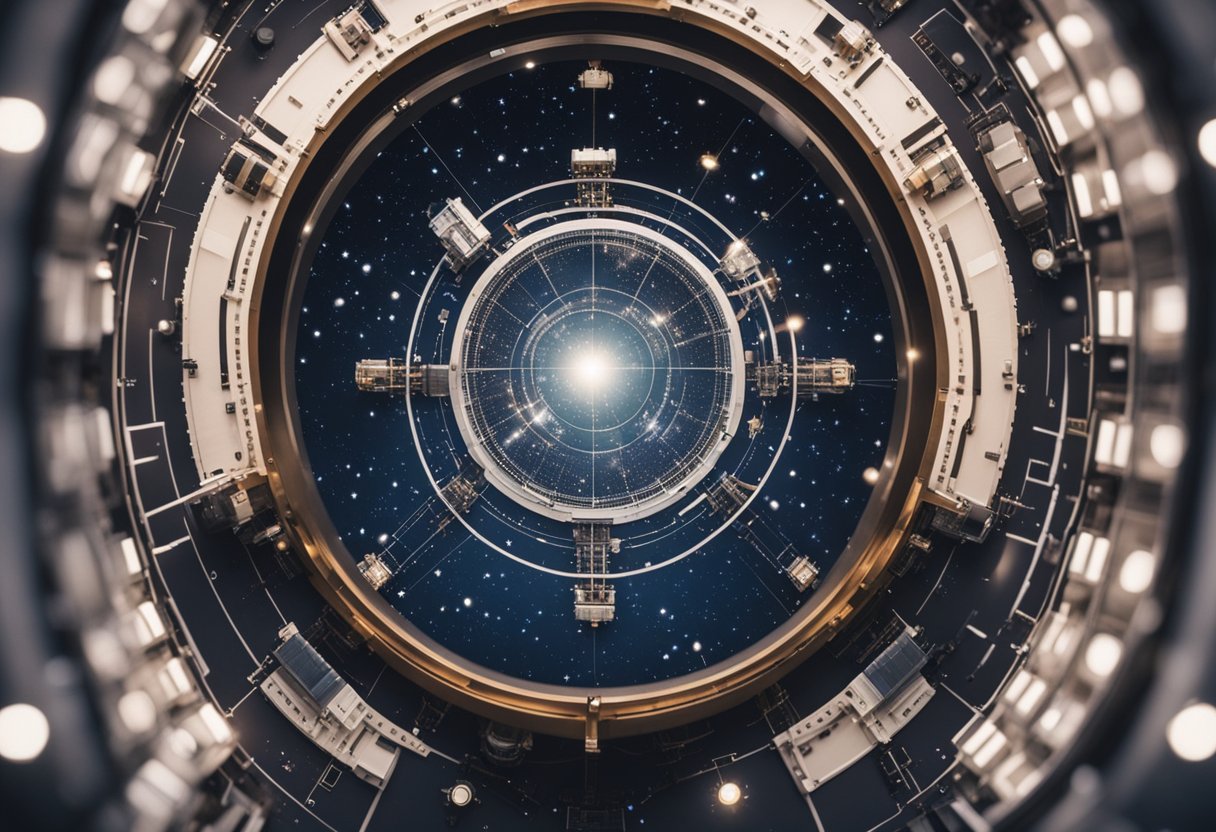
The dawn of deep space travel marks an exhilarating era in human exploration, inviting us to contemplate itineraries that reach beyond our Moon and into the vast unknown. With the advance of new technologies, the concept of venturing into the cosmos is no longer confined to science fiction; it’s a reality that’s unfolding before our eyes. Our mission to push the boundaries of deep space exploration is fuelled by the ambition to understand our place in the universe, the quest for knowledge, and an unyielding spirit of adventure.

As we break new ground with current deep space initiatives, an understanding of the challenges and triumphs of our predecessors provides valuable insight. From the historical context of these audacious missions to the present day, the experiences gleaned shape the spacecraft and vehicle design, enhance life sciences in deep space, and refine the protocols for communication and data transfer. These steps are critical to ensuring the safety and success of our astronauts and the science they aim to conduct.
Navigating the celestial sea presents unique challenges, from the physics of deep space to the development of futuristic propulsion concepts. At SpaceVoyageVentures.com, we document the bold steps being taken towards interstellar voyages, whether in the planning stages, currently available, or nearly within our reach. By staying on the cutting edge of educational outreach and inspiration, we bring the cosmos closer to everyone, answering frequently asked questions and sparking curiosity in minds across the globe.
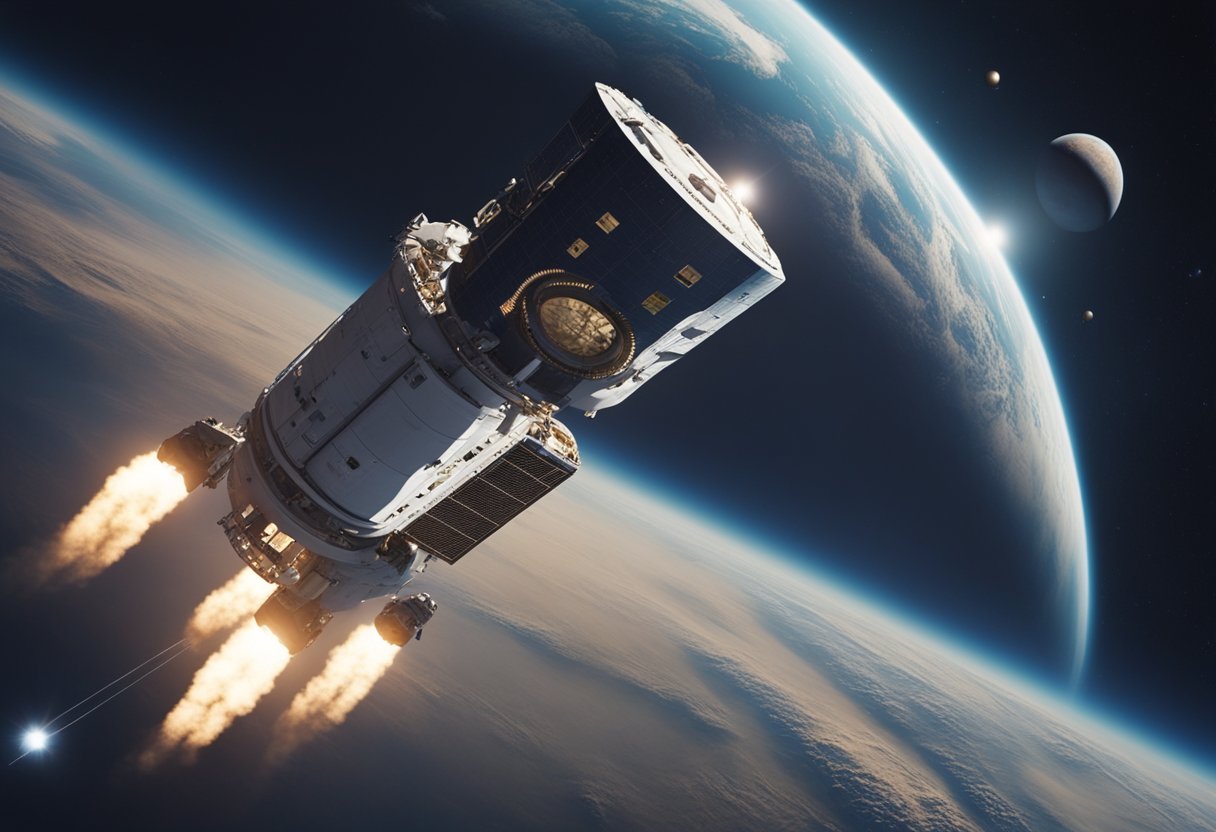
In exploring the outer realms of our solar system and beyond, we’ve seen monumental milestones that have not only advanced our understanding but have also laid the groundwork for future explorations.
The Apollo programme stands as a beacon of human achievement in space travel. Propelled by the mighty Saturn V rocket, NASA sent astronauts to the Moon culminating in the historic Apollo 11 landing. This series of missions, launching from the Kennedy Space Centre, pushed the boundaries of our capabilities and expanded our presence beyond Earth.
Our quest for knowledge about Mars has been marked by the deployment of rovers, with NASA leading these missions to explore the Martian surface. These robotic explorers, from the pioneering Sojourner to the sophisticated Perseverance, have provided insights into the planet’s geology and potential for past life, paving the way for future human exploration.
Collaboration in space exploration has resulted in extraordinary achievements, including the International Space Station (ISS). This orbiting laboratory symbolises what we can accomplish through international partnerships, as it represents a collective effort by multiple nations to maintain human presence in space and foster scientific advancement.
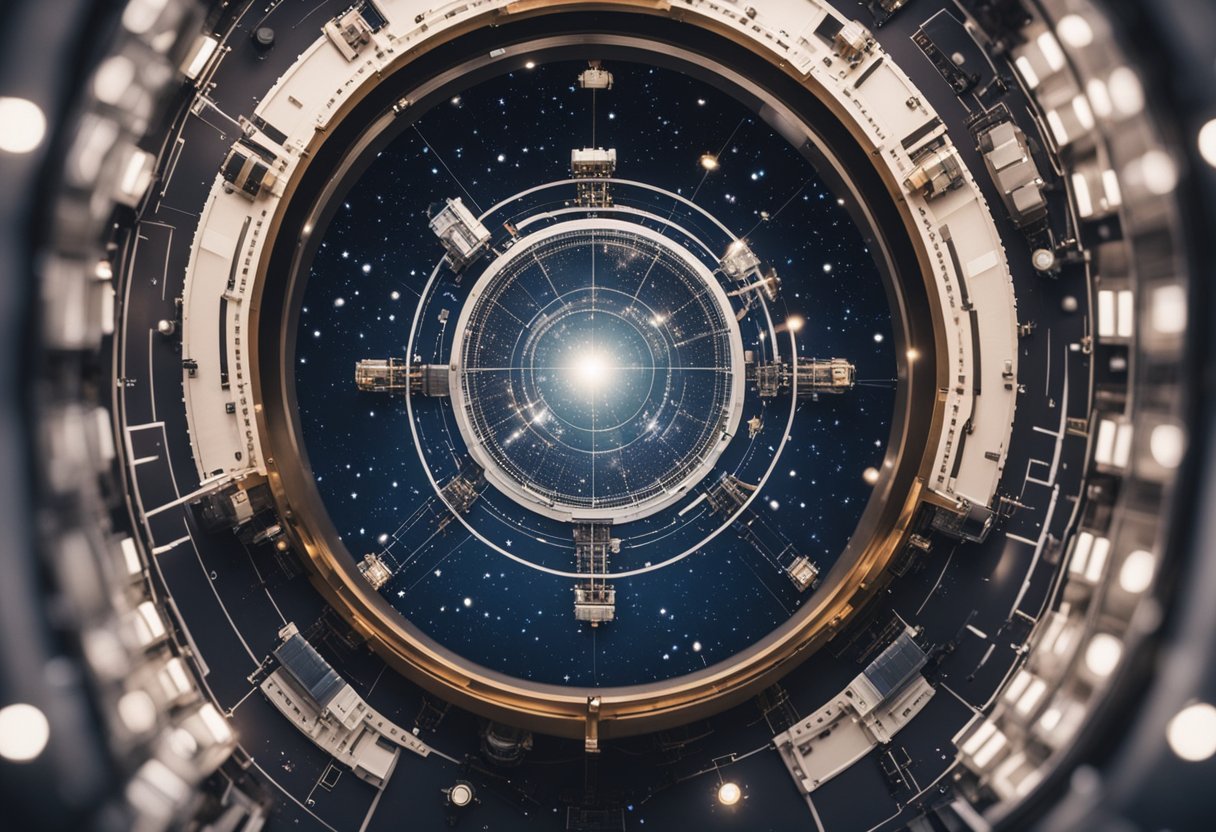
Exploration beyond Earth’s atmosphere enters a new era with several ambitious deep space initiatives. These missions aim to expand human presence in the solar system, laying the groundwork for future scientific discoveries and potential habitation.
Building on Apollo’s legacy, Artemis is designed to return humans to the Moon and construct the Lunar Gateway. This space station will orbit the Moon, providing a multi-purpose outpost that will host astronauts, facilitate scientific research, and serve as a staging point for deep space exploration. This intricate collaboration between international partners, including the European Space Agency (ESA), is instrumental in pushing the boundaries of our lunar expeditions.
We are witnessing a bold endeavour as NASA crafts its journey to Mars. Long-term missions to the Red Planet entail deep space transport systems and technology capable of sustaining life over extended periods. This includes the robotic missions currently paving the way for future human exploration.
Global collaboration is vital in the realm of deep space. The International Space Station (ISS), a symbol of such partnerships, continues to play a crucial role. It serves as a testbed for technologies and crew health protocols essential for lengthy missions. NASA, ESA, and other international entities are working diligently to maximise the use of the ISS as a springboard for deeper space ambitions.
Articulating these efforts, websites like SpaceVoyageVentures.com showcase the developments in this final frontier, hinting at the foreseeable involvement of space tourism as part of our continued venture into the cosmos.
In our pursuit of exploring beyond Earth, the design of spacecraft and vehicles is critical. We tackle the profound engineering challenges with cutting-edge technology to ensure performance and safety.
Propulsion technology is paramount in our spacecraft design. We utilise advanced rockets that can withstand the arduous journey through space. For instance, the Space Launch System (SLS), a marvel in rocket engineering, plays a pivotal role as an evolvable heavy-lift vehicle, ensuring that spacecraft like the Orion can reach the Moon and beyond with the required velocity and efficiency.
The heart of long-duration missions lies in our life support systems and habitats. We’ve designed habitats that not only serve as a transit vehicle but also operate as microgravity science laboratories. These enable human crews to reside and conduct research throughout the inner solar system. Our capabilities allow us to create environments that can sustain life, addressing the complex challenge of maintaining human health in space.
Boeing has been instrumental in the evolution of spacecraft technology. They’ve designed the Exploration Upper Stage (EUS) to expertly transport humans to deep space, emphasising crew safety with built-in redundancies. Our spaceships now incorporate the latest engineering advancements that cater to the tough conditions of space travel, ensuring not just the safety of astronauts but also the performance and reliability of the vehicle itself.
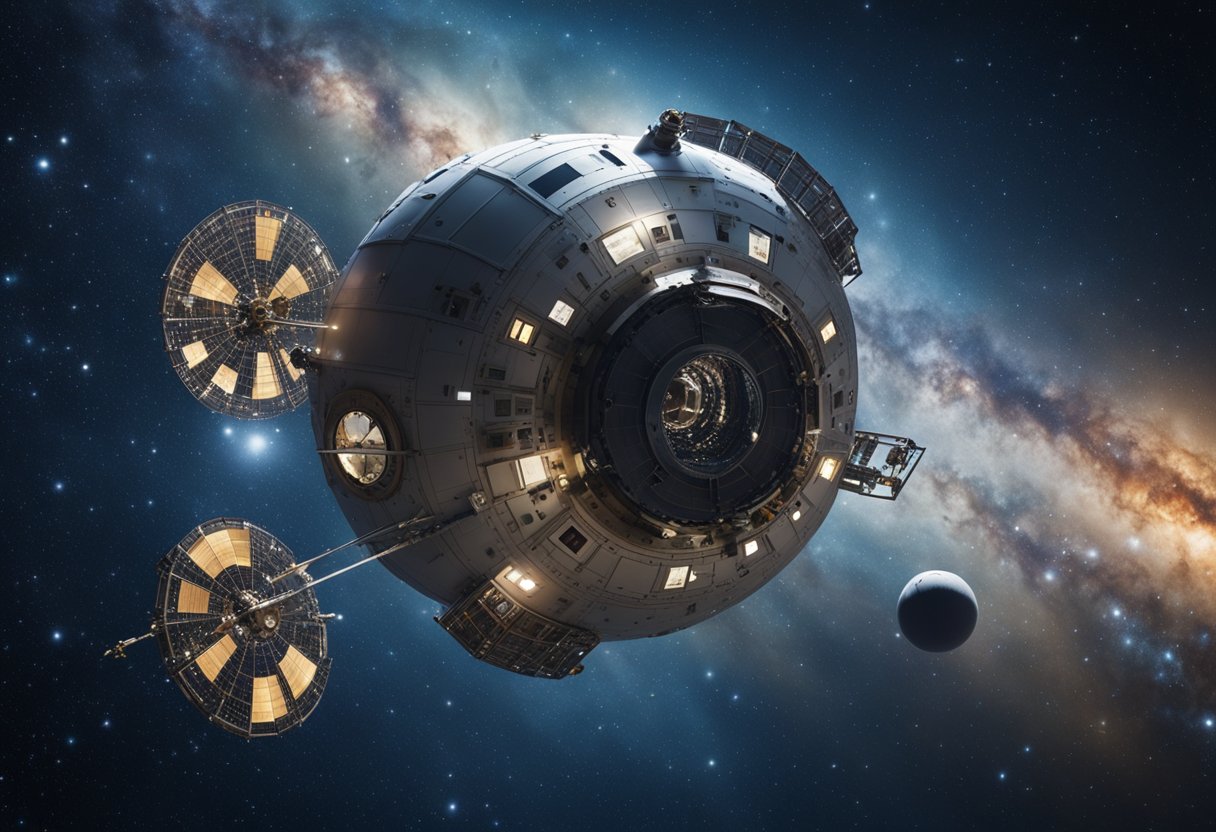
As we embark on the journey of deep space exploration, the life sciences become critical to ensure the wellbeing of astronauts. Our focus is on understanding human health and behaviour, mitigating the risks of radiation, and conducting microgravity research to support sustainable life beyond Earth.
The physical and psychological wellbeing of astronauts is paramount in deep space. Health monitoring systems are essential for detecting and managing the effects of long-duration spaceflight. Behavioural adaptations, supported by empirical research from organisations like NASA, play a crucial role in crew performance and interpersonal dynamics.
Exposure to radiation in deep space is one of the greatest challenges we face. Innovative solutions are required to shield our travellers, as traditional methods used on Earth are inadequate. Emerging research into personalised countermeasures, as outlined in Life Sciences in Space Research, holds promise for effective protection against cosmic rays and solar flares.
The effects of microgravity on the human body—such as muscle atrophy and bone density loss—are areas of ongoing scientific inquiry. Our scientists rigorously study these impacts to develop countermeasures that enable humans to thrive in weightless environments. The deployment of experiments to the International Space Station, like those discussed on Science@NASA, provides valuable data to understand and overcome the challenges of microgravity.
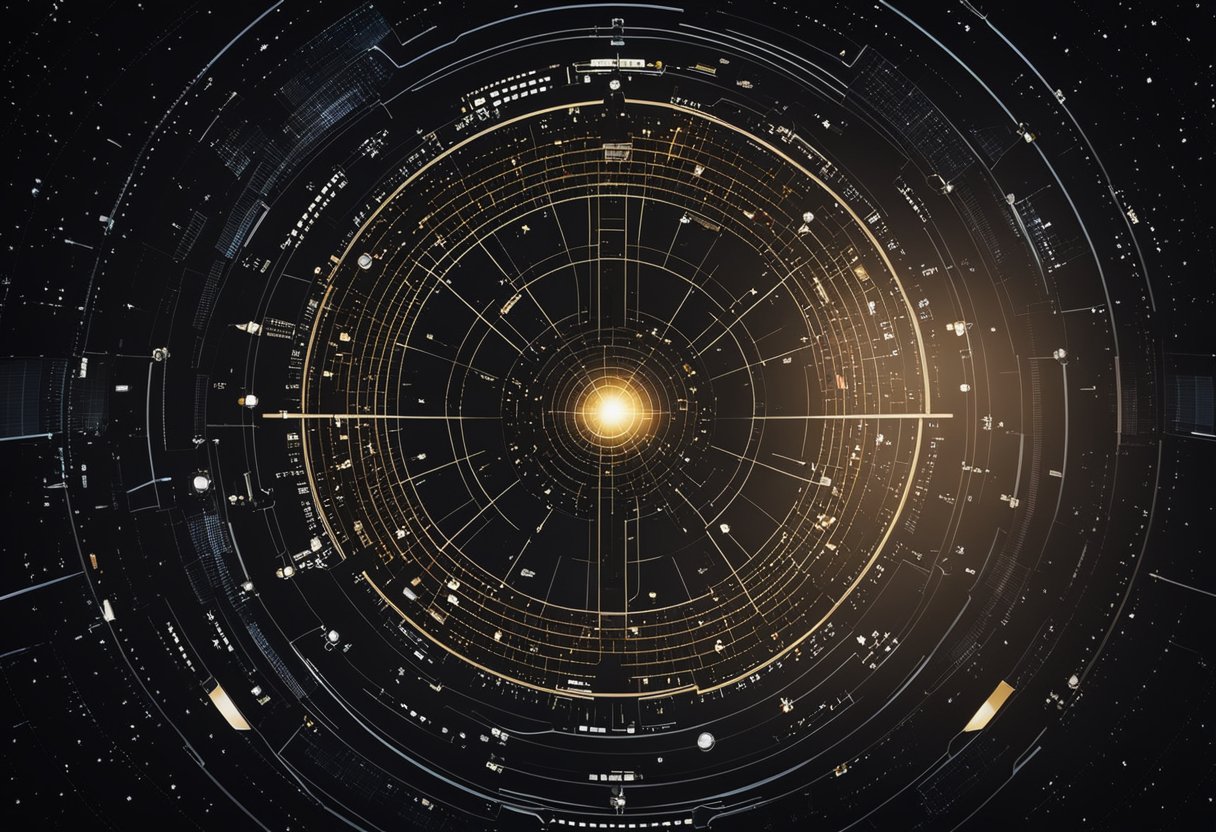
In the realm of deep space exploration, the efficiency of communication and the robustness of data handling are critical. We recognise that maintaining a strong connection in our itineraries not only ensures mission success but also allows scientists and engineers back on Earth to make timely decisions based on the data received.
Deep space communications are a vital part of our travels beyond Earth’s orbit. NASA’s Deep Space Network (DSN) represents the backbone of our communication systems, linking us to distant spacecraft with impressive accuracy and reliability. The technology facilitates encoding messages onto electromagnetic waves and transmitting them across the expansiveness of space. The capabilities of this network were substantially demonstrated when the Deep Space Optical Communications (DSOC) experiment successfully beamed data from nearly 10 million miles away.
Transmissions may take minutes or even hours to reach Earth, as seen when signals take up to 24 minutes to travel between Earth and Mars, highlighting the challenges faced by real-time communication.
Data collected during our interstellar voyages must be transmitted back to Earth and stored securely. Computers onboard our spacecraft process vast amounts of data, compressing them for efficient transmission. Once received, this data helps scientists and engineers make educated decisions about our expeditions.
For instance, results from tools like ChatGPT show the potential for AI in improving data quality and facilitating effective communication in missions. Data’s integrity is paramount; hence, we use advanced error-detection and correction techniques to ensure the utmost fidelity of the information stored and conveyed.
In summary, both communication and data handling are pivotal in our deep space itineraries, ensuring that we at SpaceVoyageVentures.com remain at the frontier of space travel and exploration.
As we prepare for the profound journey of deep space travel, we’re met with significant hurdles that range from the longevity of missions to the ethical implications of such voyages.
Mission time frames: Deep space explorations far exceed the duration of current low Earth orbit trips. These missions can extend to several years, imposing various physiological and psychological strains on our astronauts. From prolonged exposure to radiation to the development of space-specific health conditions, every additional day presents new challenges.
Resupply impossibility: Once a spacecraft departs, restocking essentials like food, water, and air becomes an impossibility. We aim to develop advanced life support systems that can sustainably manage these resources.
Moral dilemmas: We grapple with complex ethical decisions surrounding the potential colonisation of new worlds, which includes considering the impact on potential extraterrestrial life and the environments we explore.
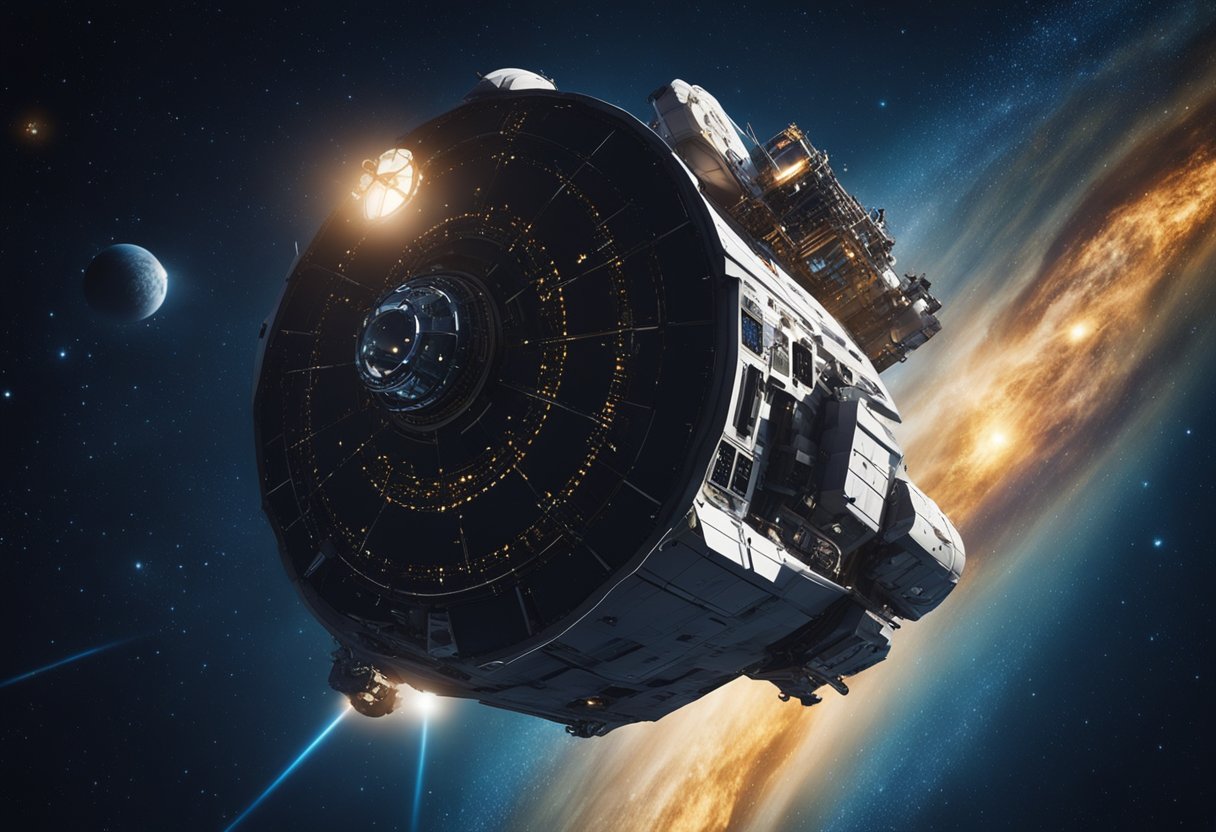
In our journey through the vast cosmos, understanding the fundamentals of celestial mechanics and the challenges of trans-asteroid belt travel are vital to navigating the unforgiving expanses of deep space.
In celestial mechanics, we meticulously calculate gravitational forces, orbital dynamics, and the laws of motion that govern the trajectories of spacecraft. Deep space navigation often exploits the intricate dance of celestial bodies, using their gravitational wells to slingshot probes into deep space. Gravitational assists are a cornerstone of interplanetary travel, efficiently altering velocity and direction without expending much fuel.
The asteroid belt, although posing less of a threat than often imagined due to its sparse nature, requires precision to cross. We account for the physics of motion and ensure that the spacecraft’s path avoids larger bodies. Collaborative efforts with agencies like NASA’s Deep Space Network help us track and communicate with our distant voyagers, ensuring their safety as they manoeuvre through this region.
Our planning also considers the magnetic fields and electromagnetic fields encountered in space. As we design vessels and plan itineraries, the influence of these fields on both navigation systems and onboard electronics is taken into account to prevent disruption to our missions. Our expertise in deep space communication further aids the charting of secure paths through the cosmos, referencing past feasibility studies like those supported by the European Space Agency.
Exploring space requires meticulous planning and a profound understanding of the physics that governs our universe. As we continue to push the boundaries of human exploration, these principles underpin every step we take into the great unknown.

We’re at the cusp of a new era of space exploration, where advanced propulsion systems are being developed that could redefine our space travel itineraries. These innovations promise to make journeys across the cosmos faster and more efficient, potentially unlocking the mysteries of interstellar space.
Solar Sails: Utilising light for propulsion, solar sails offer a method to traverse the vacuum of space without the need for traditional fuel. This concept involves large, reflective sheets that harness the momentum of photons from the Sun, gradually accelerating spacecraft over time. The initiative known as Breakthrough Starshot aims to develop spacecraft small enough to be propelled at a significant fraction of the speed of light, enabling them to reach nearby stars within the span of a human lifetime.
Electromagnetic Drives: An alternative concept under exploration involves electromagnetic drives, proposed to convert electric power into thrust without the need for propellant. Such a drive, if made feasible, could significantly reduce the mass and complexity of space vehicles, allowing for longer missions with simplified logistical needs. We at SpaceVoyageVentures.com have our eyes keenly set on these developments as they could revolutionise space tourism.
Interstellar Travel: The leap to interstellar space is a monumental challenge that requires propulsion systems far beyond our current capabilities. However, organisations are actively working to bridge that gap, investigating exotic propulsion mechanisms like antimatter drives and fusion rockets. These technologies could someday enable us to visit other star systems, a concept popularised by science fiction such as Star Trek.
Faster-than-light Travel: While still firmly within the realm of theoretical physics, faster-than-light travel holds a permanent spot in our collective imagination. The idea of warping space itself to achieve superluminal velocities is tantalising and remains a staple of science fiction. Nonetheless, it’s a concept that drives us to continue exploring the limits of physics and propulsion technology. Our mission at SpaceVoyageVentures.com is to keep our patrons informed and ready for when science fiction becomes science fact.
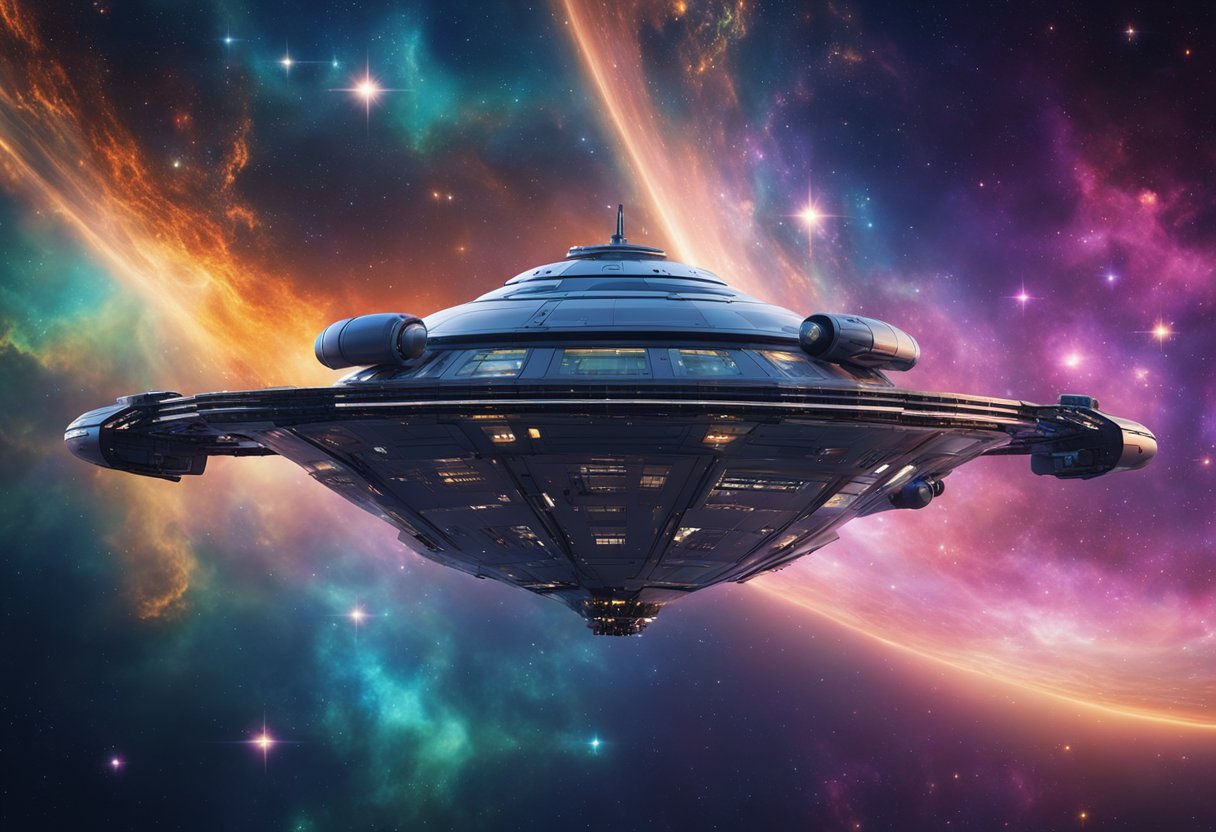
In this section, we explore the initiatives that blend space travel with education, aiming to spark curiosity and encourage educational pursuits in the realm of space exploration.
Kennedy Space Centre Visitor Complex invites visitors to immerse themselves in the rich tapestry of space exploration through its hands-on exhibits and tours. The Space Shuttle Atlantis exhibit showcases the legendary spacecraft with astonishing clarity, allowing us to interact with over 60 interactive stations. Coupled with this is the legendary Shuttle Launch Experience, where one can simulate the feeling of blasting off into space.
Journeys offered include the Kennedy Space Centre Bus Tour, weaving through iconic facilities such as the Apollo/Saturn V Centre, where the grandeur of NASA’s monumental achievements come to life. We’re also introduced to the Deep Space Launch Complex, a testament to the future of space exploration.
We play a crucial role in inspiring youth across the globe. At the U.S. Astronaut Hall of Fame, presented by Boeing, we honour heroes of space travel and encourage the next generation of explorers. Our Astronaut Encounter programme allows us to meet experienced spacefarers, enabling a personal connection with those who have journeyed beyond our planet.
With eyes set firmly on the future, the Journey to Mars exhibit in Florida brings forth interactive scenarios, preparing us for mankind’s next giant leap. Meanwhile, in Pasadena, California, similar educational drives thrive, fostering a culture of knowledge and enthusiasm for deep space endeavours.
Embarking on this journey together, we continue to broaden our horizons, not only by looking to the skies but also by sharing this passion through comprehensive educational experiences that will mould the visionaries of tomorrow.
In this section, we’ll address some of the burning questions regarding the feasibility and current state of interstellar space travel. These answers shed light on the potential of human voyages beyond our solar system within the framework of present and future technology.
It is uncertain whether interstellar voyages will be feasible by 2100. The leap required in technology and understanding of the laws of physics is substantial, and while we are working towards that goal, it is too soon to confirm its possibility.
NASA is making strides in propulsion technology and spacecraft design. Specifically, they are exploring the NASA Now + Next Mission Zone and have outlined plans to utilise new materials and energy sources that could power future spacecraft.
Methods currently under exploration include nuclear propulsion, solar sails, and ion engines. Each technology offers a different approach to solving the complex problems of long-duration space travel, where traditional chemical rockets fall short.
With today’s technology, our ventures are largely confined to the solar system. Precise missions, such as the Voyager probes, have reached interstellar space, but human exploration has yet to travel beyond the moon.
The economic cost for space journeys varies greatly depending on the mission’s scale and objective. Talking about tourism, early space tourism ventures like SpaceVoyageVentures.com indicate that costs could range from hundreds of thousands to millions of pounds.
Deep space exploration presents immense challenges due to vast distances, harsh space environments, and the current limitations of human technology. The need to sustain human life for potentially years adds a layer of complexity to designing missions that venture far beyond Earth.